






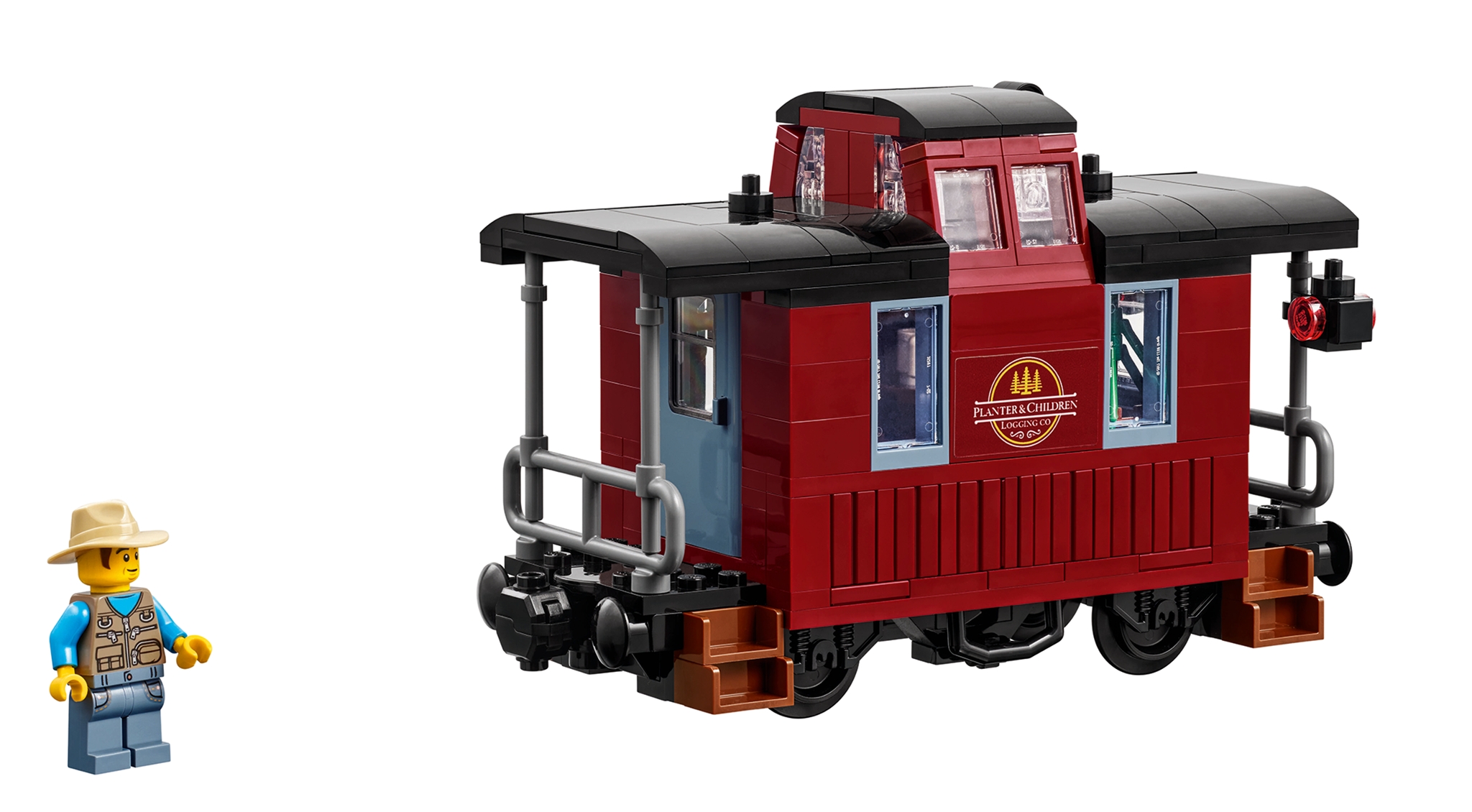
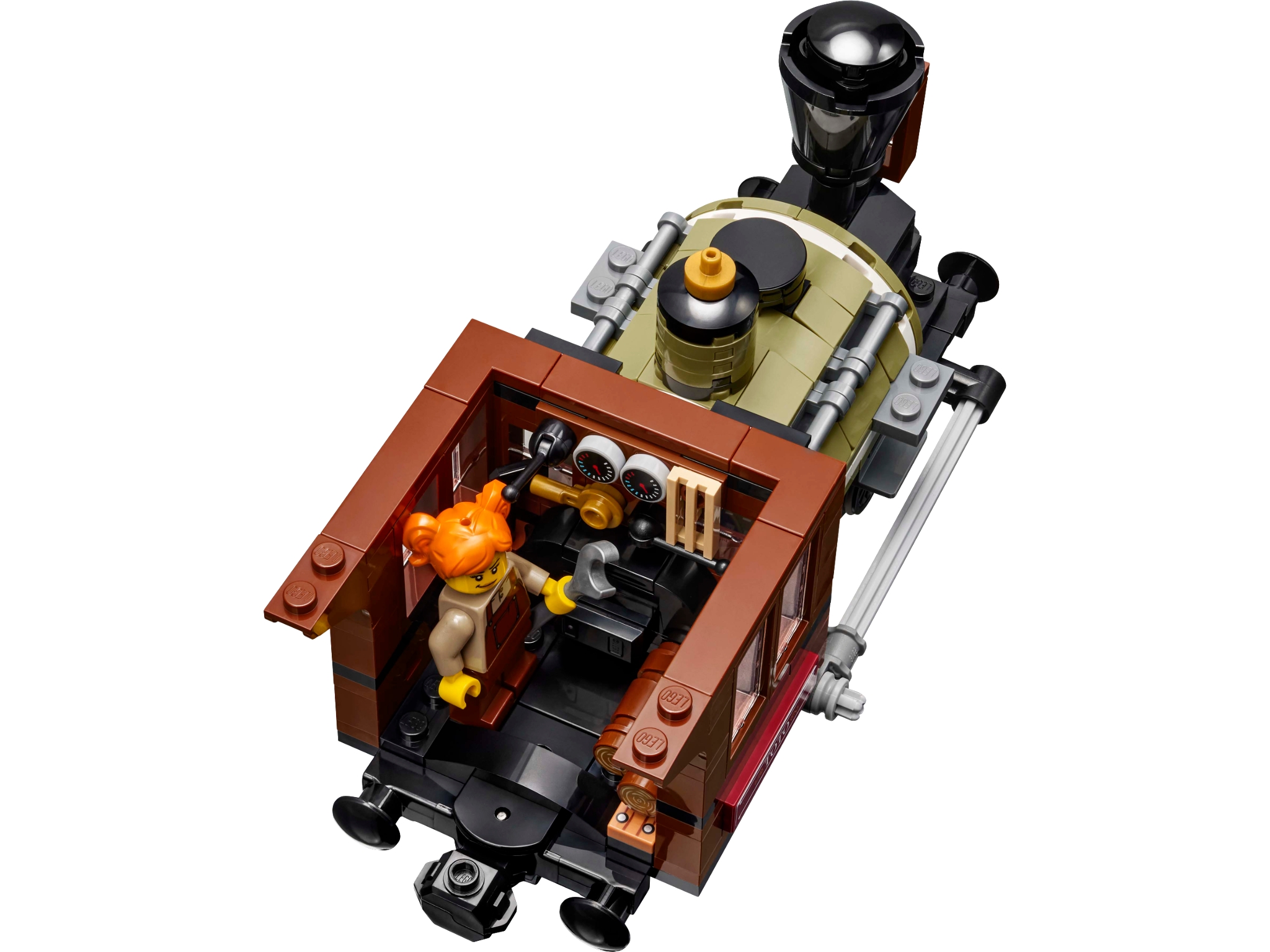













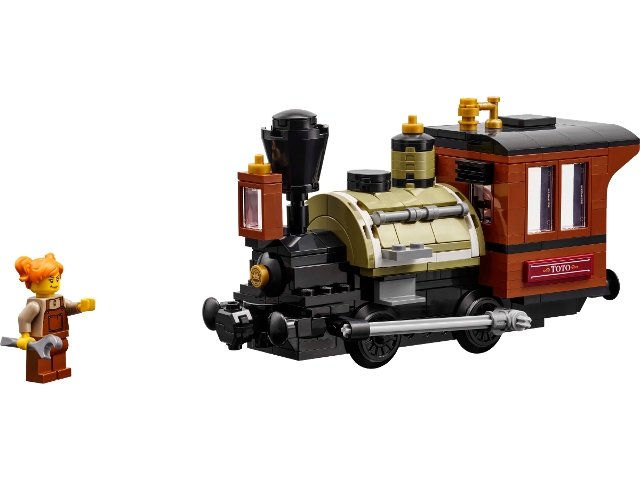
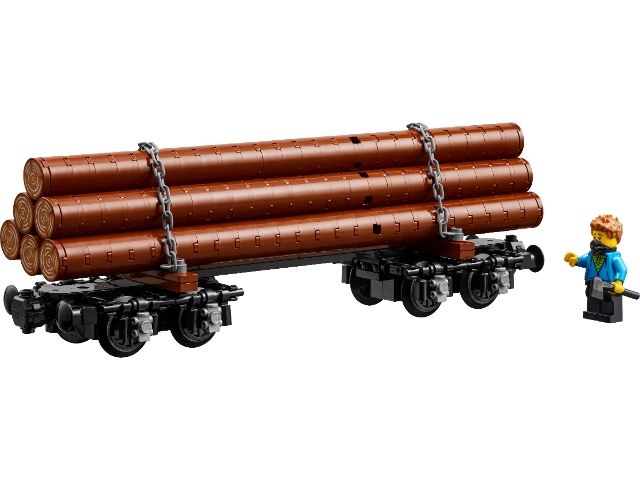
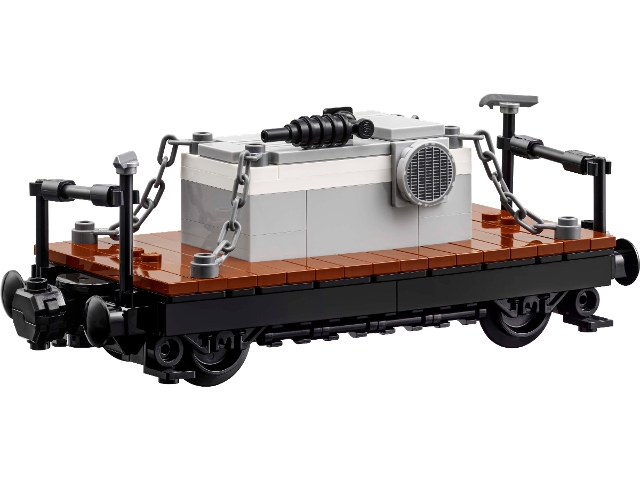
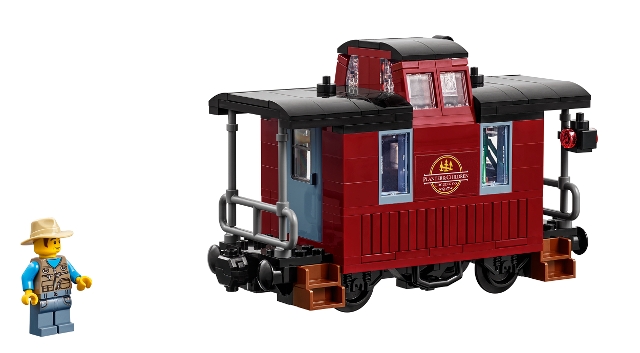
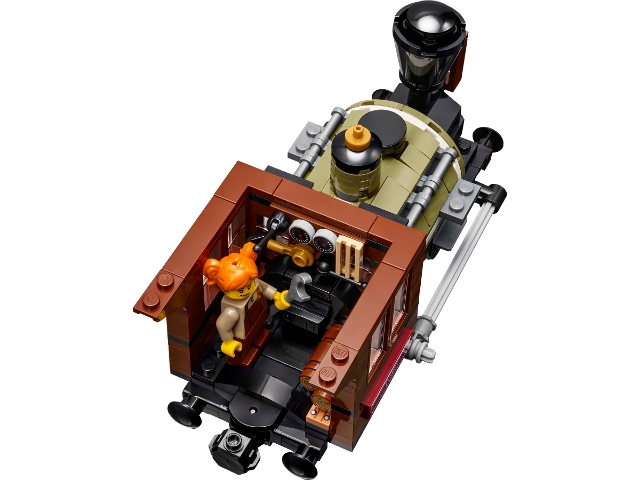
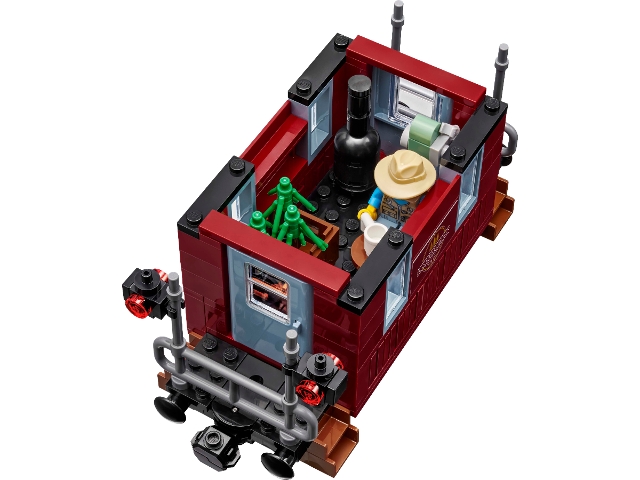
The Planter & Children Logging Co. is a fictional logging company and railway, based in central Oregon, USA. The railway was built to transport felled logs out of the forrest and down to the saw mill, but is also used by the loggers to transport themselves and their tools to and from the work site.
The locomotive pulling the train today is "Toto", the oldest locomotive in service at the railway. Toto is a 0-4-0 locomotive built in the 1890s, and is a typical logging locomotive for the time. Today it's showing its age however, and most logging companies would have replaced the loco for a more modern type a long time ago. But the engine has been kept in such good condition that it's still in regular use on the railway, and is sure to run for many more years.
Behind the loco is a flat car transporting a generator, followed by a logging wagon loaded up with freshly felled logs. Bringing up the rear of the train is an old "Bobber" style caboose, used by the logging crew use to ride in and transport their tools. It's also were the saplings used for replanting the forrest are kept.
The roof of the locomotive and the caboose is removable, and both have interior details and room for minifigures.
The train can run on standard tracks, and uses standard buffers & magnets. It's also designed with the option to add a motor and battery box (not included).
3 Minifigures included.
Model Dimensions:
Length: 25.8 cm / 10.2 in
Width: 94.1 cm / 37.0 in
Height: 23.7 cm / 9.3 in

Hi, I'm Ties van Asseldonk and it's my absolute pleasure to welcome you on board the Logging Railway.
I've been a LEGO fan for as long as I can remember, and I've been obsessed with trains for even longer. I've been building & designing my own LEGO trains since I was a kid, and I never really stopped. In my daily life I work as a freelance developer and designer, and I'm a member of the Lowlands L-Gauge Model Train Club, a small group of LEGO train friends that regularly displays LEGO trains & layouts at different shows and events.
The model is inspired by the American logging railroads of the late 1800s and early 1900s. These railways were usually very temporary operations, with track being laid quickly and cheaply. Once all the logs had been extracted from one area, the tracks would usually be pulled up and moved to the next section of the forest. If a bridge was needed, it would be built on site using the same logs that the railway would transport.
The rough nature of the tracks means that they were only suitable for small locomotives with a short wheelbase. These wouldn't derail as easily, and could run through much tighter curves than most mainline steam locomotives. This makes for some really interesting, almost cartoonish looking locomotives and wagons. To me that made them really interesting to model in LEGO. I hope you will enjoy building this set as much as I enjoyed designing it.
How do you find inspiration for your designs? What inspired this BDP set in particular?
My inspiration usually comes from something I see in the real world that I want to re-create, or it starts with a specific LEGO element.
For this model, I knew I wanted to build a steam train, and I wanted to be able to motorise it, so I started by placing a train motor. Then I just started placing different elements and shapes around the motor, moving them around until I found the shape and proportions of the logging locomotive that I ended up with. Once I had the shape of the locomotive, I found some images of similar locomotives running over a wooden trestle bridge, and decided I needed to add one of those to my model.
What was the first set you ever built? Which one is your favorite? What is one set you would love to see being made?
I've been playing with LEGO for longer than I can remember, so I don't specifically know what my first set was. But I have a very vivid memory of building and playing with the Freight and Crane Railway set (4565) together with my dad, and him ordering more tracks the same day we finished building it.
My favourite set is a hard one. The first set I remember buying myself was the My Own Train Small Train Engine with Tender in blue (KT403), so that wil forever hold a special place im my heart. But I think my current favourite is Wall-E from LEGO Ideas (21303), I love how the designers where able to capture the character so wel in LEGO, and it's the only official set that I currently have on display.
As for a set I'd love to see made: More trains please!
How would you describe your building style? Do you usually design sets within a certain theme?
I would say my building style is mostly scale modelling in LEGO. I love trying to re-create real things (usually trains) in LEGO bricks, trying to capture their shape and proportions as closely as possible.
How would you describe your role in the LEGO® fan community?
I love sharing ideas and learning from other builders, I think it's one of the things I love most about the LEGO community. Recently, me and some other train builders started Open L-Gauge, a website for ourselves and others to promote and share free building instructions for the train models we design & build.
Have you been to any LEGO community events or conventions? If so, what were they like?
I was actually sitting on a bench outside the L-Brick Bauspielbahn-Treffen (an enormous multi-day LEGO train event in Schkeuditz, Germany) when I joined the video call with the BrickLink team and got the news my model had been selected as one of the 5 finalists.
I've been to a few LEGO community events and train shows together with the Lowlands L-Gauge Model Train Club, and it's always great to get a chance to chat with other builders and see their creations in person.
What do you think makes a BDP set successful?
I think the best BDP sets are the ones that offer something you wouldn't normally see from LEGO. Models that take some risks, are very niche, or just too weird to justify a full-scale production.
What advice would you give to the next set of hopeful BDP designers?
Build something for yourself, don't think too much about what the general public wants. Building is supposed to be fun, so don't stress yourself out thinking about the expectations of others.



































































































